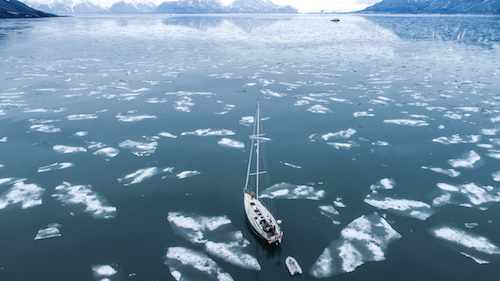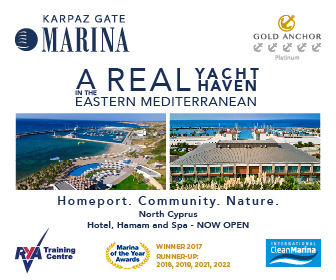Arctic Ocean, Svalbard: New Rules Give More Space for Sailors
The Norwegian Government has issued new rules that will help protect the pristine environment of the Svalbard archipelago which lies between mainland Norway and the North Pole and which has become an increasingly popular destination for Arctic tourism.
Published 9 months ago
Reprinted with Permission from author, and high-latitude sailor, Jon Amtrup.
The pristine environment on Svalbard is under constant threat from climate change and now the Norwegian government has issued new regulations. The cruising industry will be restricted from 2025, if the parliament agrees, leaving more space to sailors who set the course for Svalbard on their own keel.
The new rules include:
- Landings in protected areas are prohibited, except for 43 landing sites shown on maps included as annexes to regulations for protected areas. This prohibition only applies to tourist activities, not individual travellers or permanent residents.
- A limit of 200 passengers on board ships in all protected areas.
- The use of unmanned vessels (drones) is prohibited in protected areas.
- Motor traffic at sea may not exceed the speed limit of 5 knots at a distance of 500 metres form land outside bird cliffs in the period 1 April to 31 August.
- Motor traffic at sea must keep a minimum of 150 metres distance from haul-sites for walruses (except for necessary access to ports, buildings etc.) and the speed limit for motor traffic is 5 knots at a distance of 300 metres from haul-sites for walruses.
This is good news for both nature and sailors who come on their own keel with family or friends on board. With all the cruising activity limited to 43 designated landing sites, sailors can explore the rest of the Arctic archipelago in peace.


The restriction on a maximum of 200 persons will also make a huge difference for nature. Today monstrous cruise ships with thousands of passengers regularly visit Svalbard in the short summer months. Running engines and diesel generators 24/7 does not exactly reduce the fast melting of the glaciers.
One of the main arguments from the cruise industry is that you have to experience the Arctic to understand and love it so that you can contribute to preserving it. That is an argument I don’t buy because sitting among hundreds and maybe thousands, of fellow cruise ship guests in a floating all-inclusive giant ship does not give you the necessary connection to nature. Nor does the endless stream of zodiacs zooming back and forth dumping people for a short walk on the soon-to-be-not-frozen tundra.
That’s just another replica of the queue you experience on your daily commute to work – in slightly more exotic areas.
It is disappointing that the new rules don’t see the difference between small-scale sailing tourism that usually takes less the 12 people on board for their trips. That is sustainable tourism that lets people connect with nature and establish a deeper understanding of the serious threats we are facing in the Arctic.
The proposed changes to the Svalbard Environmental Protection Act will be presented to the Norwegian parliament for final approval. Read the full proposal here.
…………………………………
About the Author:
Jon Amtrup is the co-founder of Gate to the Arctic and author of an award-winning article about the cruise industry in Svalbard, as well as several books about sailing in the Arctic.
- The icy sound of climate change: Brian Black Memorial Award 2022 winner
- Sail to Svalbard by Jon Amtrup
- High Latitude Sailing: Self-Sufficient Sailing Techniques for Cold Waters and Winter Seasons. by Jon Amtrup & Bob Shepton
…………………………………
The opinions expressed in this article are the author’s own and do not reflect the view of Noonsite.com or World Cruising.
…………………………………
Find out all news, reports, links and comments posted on Noonsite, plus cruising information from around the world, by subscribing to our FREE monthly newsletter. Go to https://www.noonsite.com/newsletter/.
Related to following destinations: Longyearbyen, Norway, Ny Alesund, Svalbard (Spitsbergen)
Related to the following Cruising Resources: Arctic, Books, Environment, Routing






